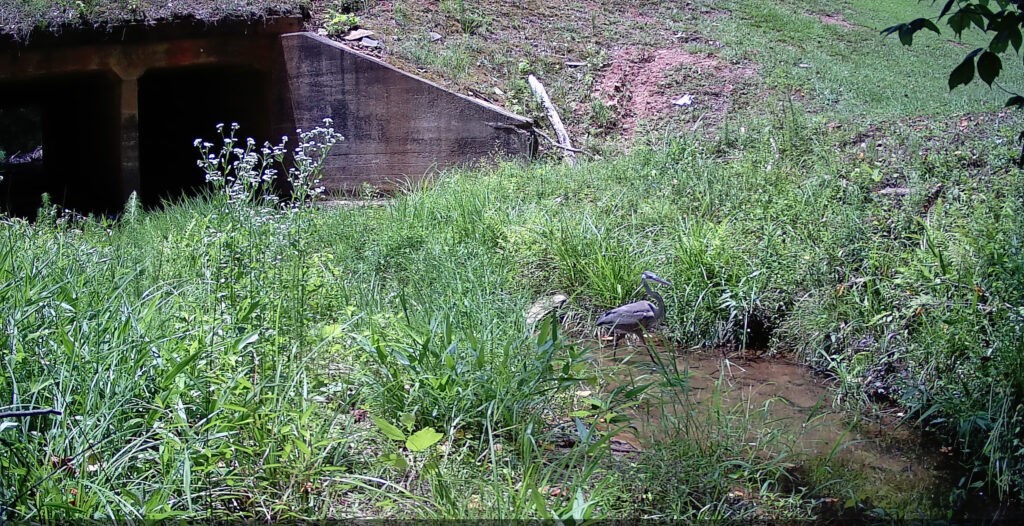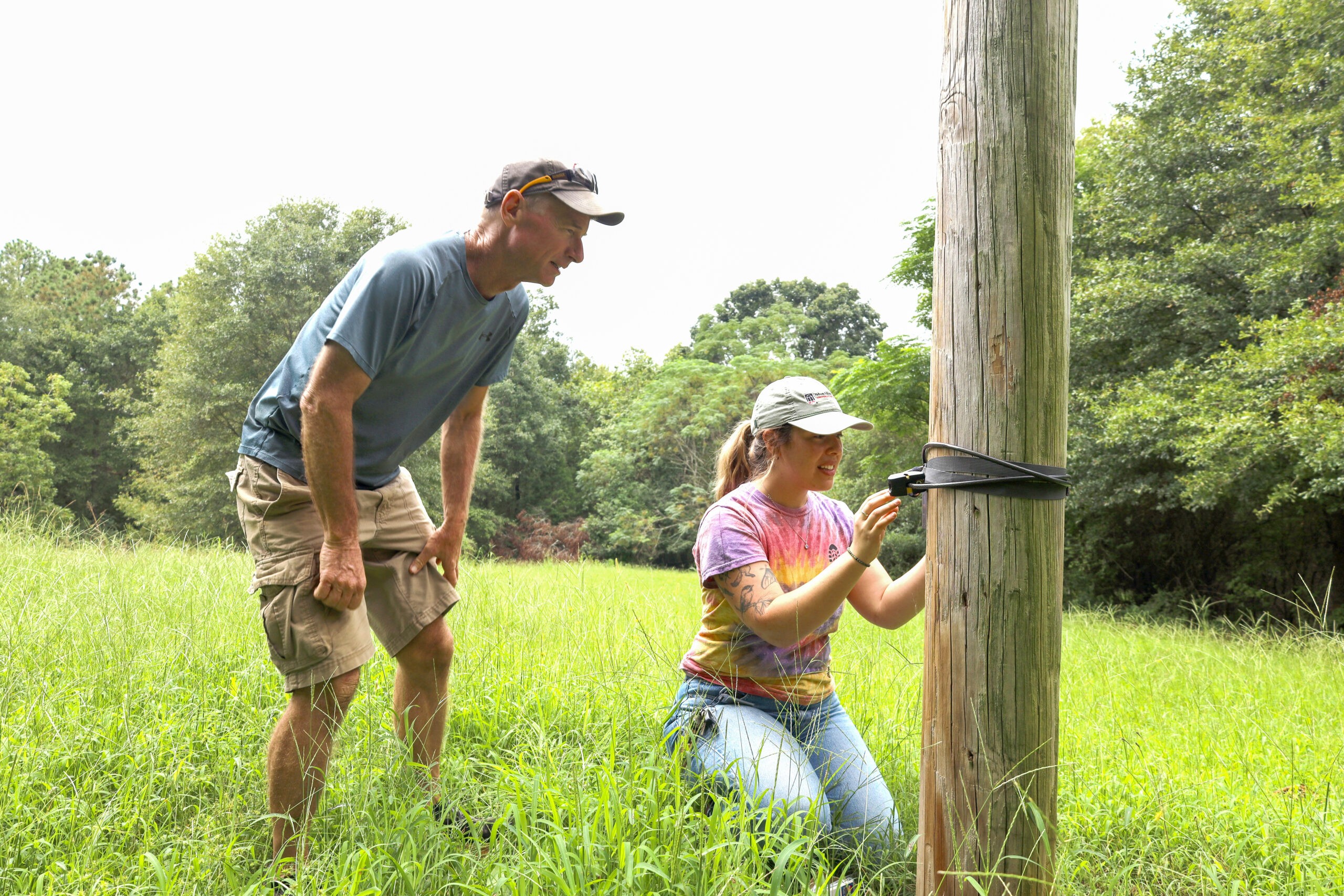John King knows there are deer on his small Madison County farm. Lots and lots of deer. He and his wife also have seen red foxes, coyotes and raccoons, among other wildlife.
So, when he got an opportunity to help a student researcher by putting a camera trap on the property, he thought, why not?
“We know we have critters,” he said. “So, when I got an email about the project, I thought, ‘Let’s go for it.’”
The Kings are among dozens of Athens-area property owners who are hosting cameras placed by Maddy Solomon, a Ph.D. student in the Carver Research Group at the Odum School of Ecology.
Solomon is looking for foxes—and specifically foxes showing signs of sarcoptic mange disease—to see where the disease appears in wild animals across a range of forest-to-rural-to-urban environments. Understanding where wild mammals carry the disease can be important to protecting them, as well as other animals, including domesticated dogs and people.
A sneak peek
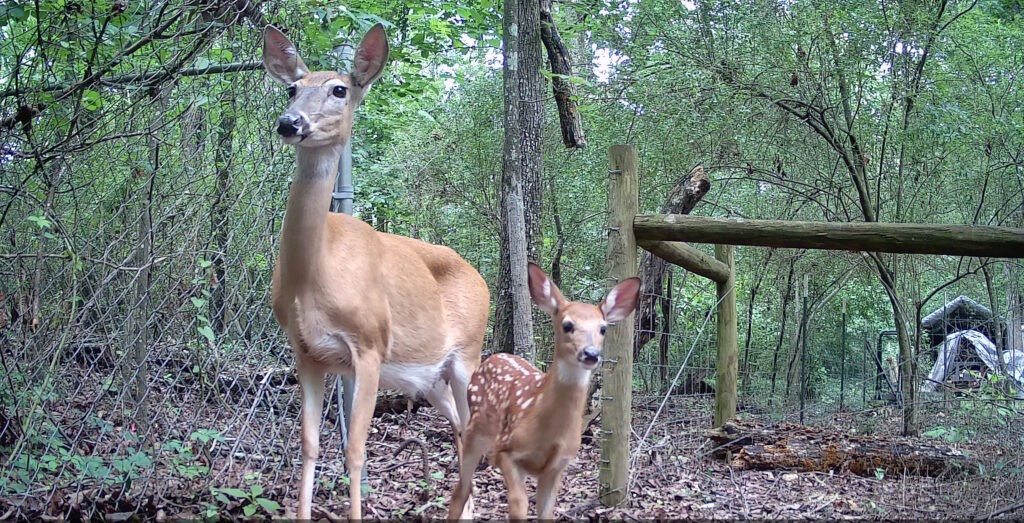
Solomon spent most of this summer placing cameras across the Athens area.
Originally from upstate New York, she received her bachelor’s degree in conservation biology and public health from St. Lawrence University and a master’s in conservation medicine from the Tufts Cummings School of Veterinary Medicine.
She first worked with wildlife cameras as an undergrad, when she participated in North Country Wild, a citizen-science project that placed cameras and used volunteers to review photos.
“That project was really just about informing local people about what lives in their backyard and the area in general. It was fun; the work was about connecting people in that part of New York with the nature around them,” Solomon said.
Her current project partners with an ongoing project led by the Kohl Wildlife Lab at the Warnell School of Forestry and Natural Resources. The Kohl Lab has monitored urban wildlife diversity, ecology and behavior in Athens-Clarke County since spring 2019.
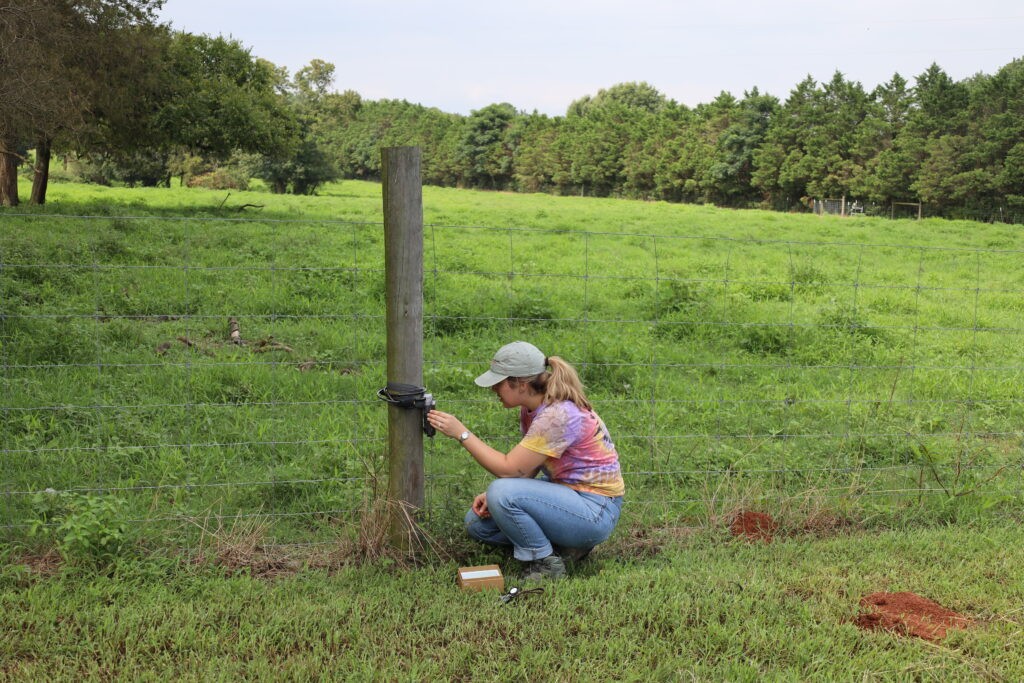
“I am looking for foxes and sarcoptic mange across an urban-rural-forestland-use gradient. How and why does sarcoptic mange transmission vary across land uses?” she said.
While she will learn more about foxes in Athens, Solomon’s research also treats mange as a model pathogen to help scientists better understand how wildlife diseases spread across different land uses. Foxes make a good animal to study because they live in both rural and urban areas, and mange is a useful disease to study because many of its signs and symptoms are visible.
“I’m concerned with wildlife health and understanding how disease varies across the landscape,” she said. “I have a background in animal welfare, so it’s really important to me that the cameras allow me to get data with as little disruption as possible to the wildlife.”
The project involves 106 cameras, including 39 Kohl Lab cameras and two at Solomon’s home that she uses to gauge when batteries and memory cards need to be replaced.
Choosing where to put all those cameras was important. She started by inviting residents through posts on Nextdoor, a popular social media app where locals share information and solicit recommendations.
Placing the locations of the Kohl Lab cameras and the addresses of the willing participants on a land-use map, Solomon ensured that the fleet of cameras would capture all types of properties.
“Every person that I have met has been enthusiastic about the project and asked really insightful questions. It’s so great to share this excitement about nature with so many people,” she said.
Understanding wildlife

To place each camera, Solomon thought about animal behavior and what height or angle might work best. For example, deer might stop to graze in a clearing, coyotes might walk along a fence line or herons might land at the edge of a creek to fish. When an animal approaches, the cameras are triggered by a combination of body heat and motion.
As she collects memory cards from each camera, Solomon saves a version of the photos to send to residents so that they can see what animals share their property.
One property owner was convinced that she’d seen a bobcat on their property, but her husband didn’t believe her.
“We were able to capture that bobcat, and she could show her husband and say, ‘See, I told you we had a bobcat,’” Solomon said. “People have been pretty excited and often email back to tell me that they learned something.”
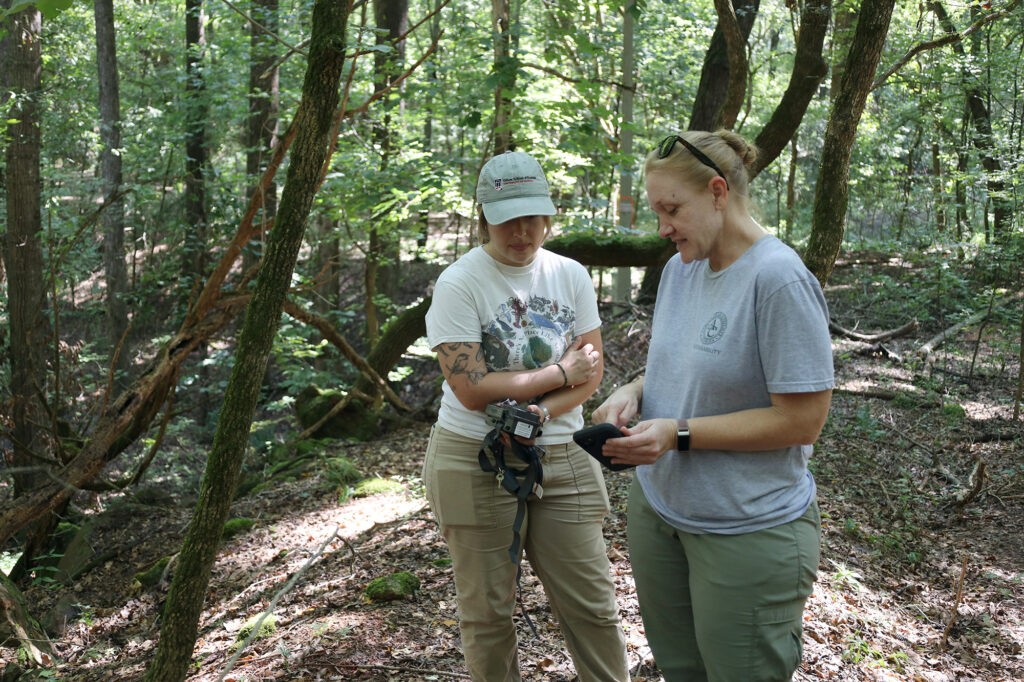
Learning was Shashana Reinking’s goal. A creek runs across the edge of her property, so the family interacts with wildlife often.
“With the creek, we see all sorts of animals. We have to keep a weighted cover on our trash can to keep out the raccoons,” she said. Her daughter wants to go to vet school one day, and volunteering to host a camera seemed like a great way contribute to research and see what wildlife visits the creek, she said.
For an animal that lives in nearly every state and all types of landscapes, red foxes are under researched, said Scott Carver, the Ecology professor advising Solomon and associate director of the Center for the Ecology of Infectious Diseases.
“We are trying to understand where foxes are exposed to sarcoptic mange. Do they get it in urban areas, rural or natural areas?” Carver said. Building on the Kohl Lab’s cameras in urban areas, the cameras Solomon placed will capture animals in more rural and natural parts of Athens.
“We hope to get a holistic picture of what’s going on across the county,” Carver said.
The scope of the project is ambitious, but AI tools have made the first review of images simpler than it was just a few years ago, when people had to review thousands of photos to see if they contained animals at all before attempting to tag the species.
“This is by far the biggest project I’ve worked on,” Solomon said. “It was kind of daunting when we first talked about it. It’s a lot for one person to handle, but I’m excited about the results.”
